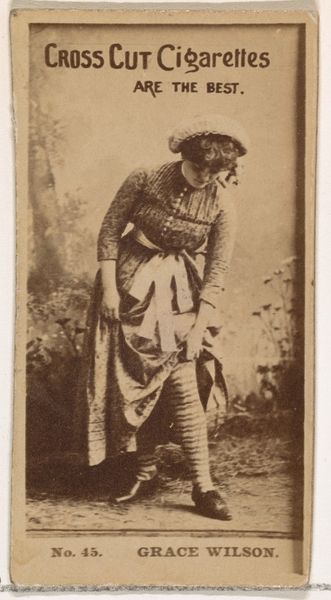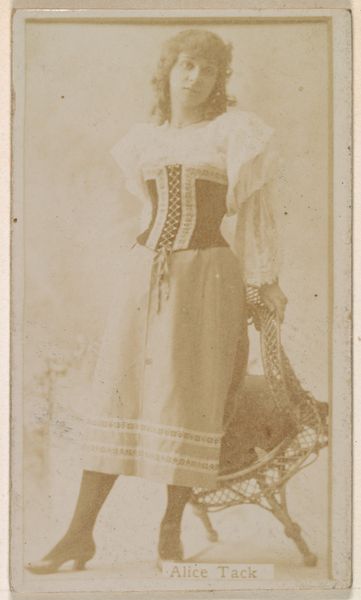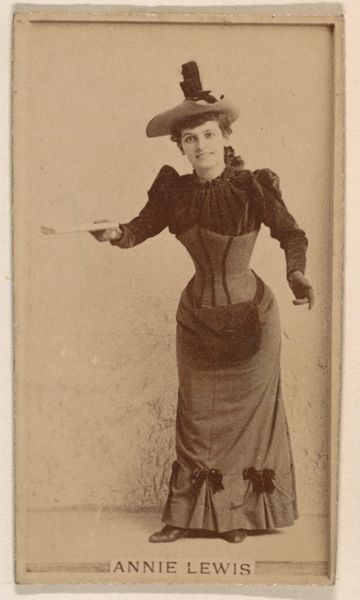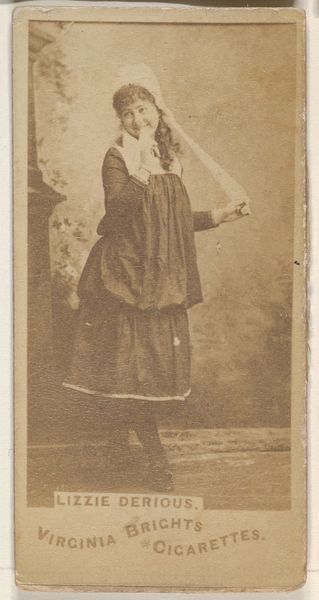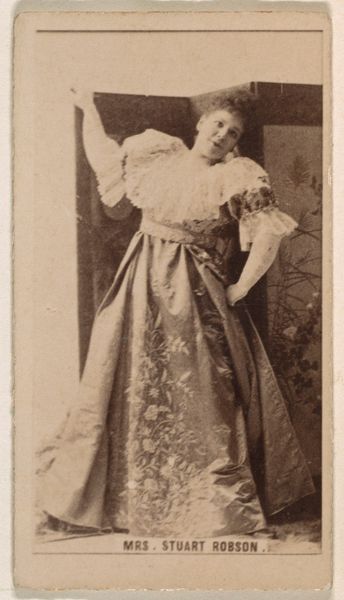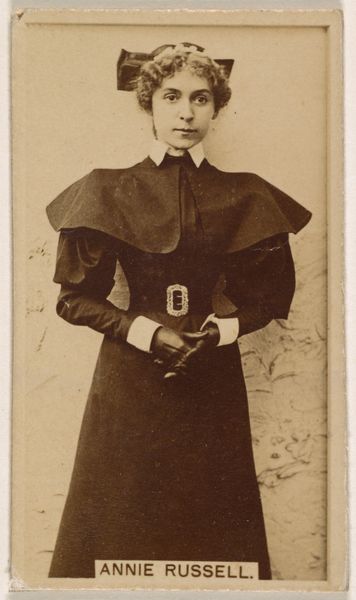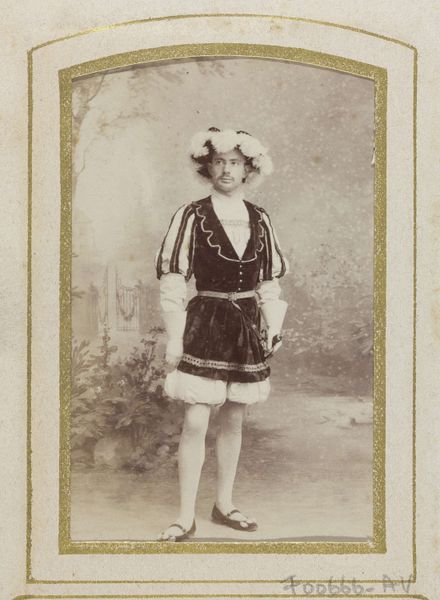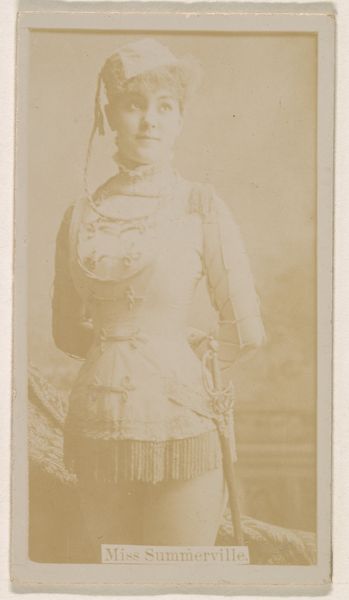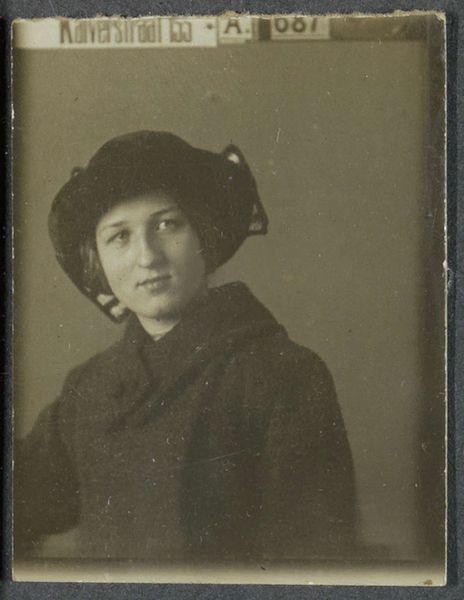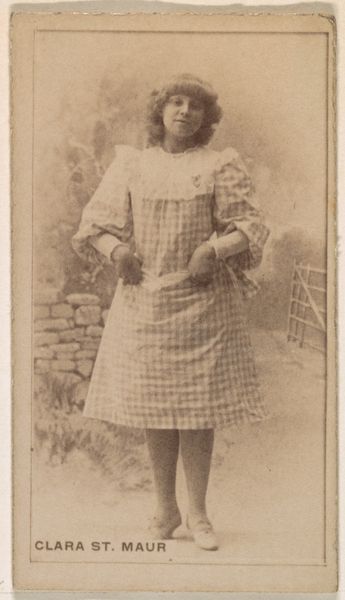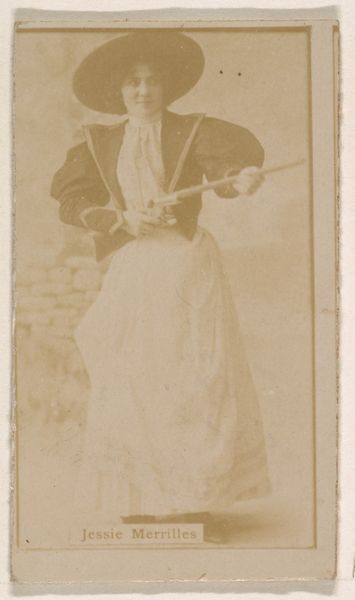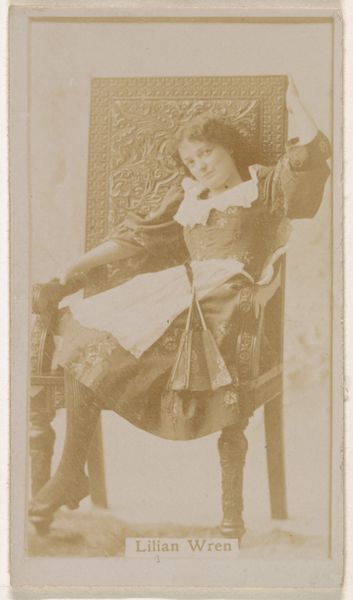
photography, gelatin-silver-print
#
portrait
#
landscape
#
photography
#
gelatin-silver-print
#
genre-painting
Dimensions: height 65 mm, width 97 mm
Copyright: Rijks Museum: Open Domain
Curator: Welcome, everyone. Before us we have an early photograph titled, "Meisjes in Volendamse klederdracht op een dijk," which roughly translates to "Girls in Volendam Costume on a Dyke." It's a gelatin-silver print estimated to have been created between 1900 and 1910. Editor: It's evocative, certainly. The composition feels very structured, almost like a tableau, with the repeating forms of the women drawing your eye into the scene. But there is something melancholic and staged. Curator: Well, it's a product of its time. These genre scenes became incredibly popular, reinforcing notions of Dutch identity and rural life even as urbanization rapidly changed society. There was a real market for idealized versions of cultural heritage. Editor: It is undeniable, that the repetition of the skirts’ material and the lace coifs creates a powerful rhythm, almost like the steady beat of manual labor, but look at the stark, unadorned quality of their dresses. Gelatin-silver prints allowed for much greater detail than previous photographic processes; however it also amplified the visual textures of work. It begs to wonder what were these specific women's real-life prospects for advancement. Curator: Exactly. Photography played a significant role in shaping perceptions and constructing these narratives. The crispness and tonal range achievable with the gelatin-silver process would be key in how these images were widely circulated, solidifying visual codes associated with Dutch cultural identity. Tourist wanted images to take back home with them. Editor: Note also the contrast. Light versus dark. This emphasizes that stark divide and it really evokes, to me at least, the limitations, yet the resilience and quiet dignity, in repetitive working lives. Curator: I appreciate that observation about "quiet dignity." It serves as a good point, that there is a complex interaction between visual representation and the lives it documents. The costumes can also obscure specific individuality to represent “Dutch” people as an aggregate. It leaves so much left up to interpretation. Editor: Definitely. This photo pushes beyond pure documentation and hints at the social context, and the realities for these women who are perhaps now lost to history except through imagery of material culture like this. Curator: Absolutely. It encourages us to look deeper into what constitutes identity, culture, and representation beyond a pretty surface. Editor: Right. Looking past aesthetics is not a negation, but can open many exciting avenues for understanding how objects relate to identity and history.
Comments
No comments
Be the first to comment and join the conversation on the ultimate creative platform.
